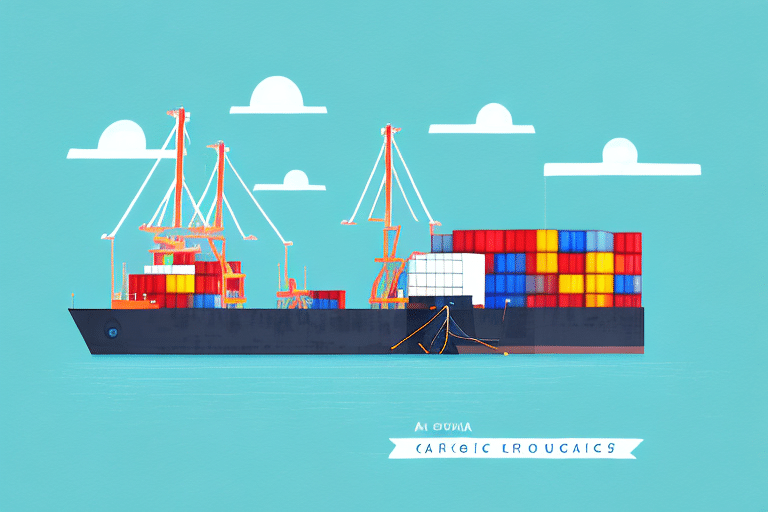Calculating the Landing Cost of Your Goods
Understanding and accurately calculating the landing cost of your goods is essential for maintaining profitability and competitiveness in today’s global market. The landed cost encompasses all expenses associated with getting your products from the supplier to your warehouse, including freight charges, taxes, duties, and other fees. By comprehensively accounting for these costs, businesses can set appropriate pricing strategies, enhance profit margins, and make informed logistical decisions.
Importance of Landing Cost in Business Success
Accurate calculation of landing costs empowers businesses to:
- Set Competitive Prices: Avoid overpricing that can deter customers or underpricing that can erode profits.
- Enhance Profitability: By understanding all cost components, businesses can optimize expenditures to improve margins.
- Inform Strategic Decisions: Data-driven insights aid in supply chain optimization and market expansion strategies.
According to a Statista report, global shipping trade has been growing consistently, making effective landing cost management increasingly crucial for businesses engaging in international trade.
Key Components of Landing Cost
Calculating the landing cost involves several critical components:
Freight Costs
Freight costs are a significant part of the landing cost and vary based on:
- Mode of Transportation: Air freight is faster but more expensive than sea or land transport.
- Distance: Longer distances generally incur higher costs.
- Weight and Volume: Heavier and bulkier goods cost more to transport.
According to the Bureau of Transportation Statistics, optimizing freight costs can lead to substantial savings in the supply chain process.
Duties and Taxes
Duties and taxes are imposed by governments based on the type of product and its country of origin. The Harmonized Tariff Schedule (HTS) provides detailed tariff codes that determine these charges.
Businesses can consult resources like the US International Trade Commission to accurately determine applicable duties and taxes.
Customs Brokerage Fees
Customs brokers facilitate the clearance of goods through customs. Their fees vary based on the complexity of the shipment and the services required.
Insurance
Shipping insurance protects against potential losses or damages during transit. The cost of insurance depends on the value and nature of the goods being shipped.
Packaging Costs
Effective packaging ensures the safety and integrity of goods during transportation. Costs include materials and labor, and can vary based on the type of packaging required.
Additional Fees
Other potential costs include storage fees, handling charges, and fees for special services like refrigeration or hazardous material handling.
Strategies to Optimize Landing Cost
Reducing Costs without Compromising Quality
Businesses can implement several strategies to minimize landing costs while maintaining product quality:
- Optimize Packaging: Use lightweight and durable materials to reduce shipping weight and volume.
- Consolidate Shipments: Combining smaller shipments into larger ones can lower per-unit shipping costs.
- Negotiate with Carriers: Secure better rates by negotiating terms or leveraging long-term relationships.
- Explore Alternate Transportation Modes: Assess different transportation options to find the most cost-effective solution.
Choosing the Right Mode of Transportation
The choice of transportation mode impacts both cost and delivery speed:
- Air Freight: Faster but more expensive; ideal for high-value or time-sensitive goods.
- Sea Freight: Cost-effective for large and heavy shipments but slower.
- Land Transport: Suitable for regional shipments with flexible costs.
Additionally, consider the environmental impact of each mode. For instance, sea freight typically has a lower carbon footprint compared to air freight, aligning with sustainability goals.
Reference: International Civil Aviation Organization on Environmental Protection
Importance of Accurate Record-Keeping
Maintaining meticulous records of all costs associated with importing goods is vital for:
- Accurate Cost Calculation: Ensures all expenses are accounted for in the landing cost.
- Compliance: Meets legal and regulatory requirements, avoiding fines and penalties.
- Cost Analysis: Identifies areas where costs can be reduced or optimized.
Proper documentation also facilitates smoother audits and can improve relationships with suppliers and logistics partners by demonstrating reliability and transparency.
Adjusting Pricing Strategies Based on Landing Cost
Once the landing cost is calculated, businesses should:
- Set Appropriate Prices: Ensure prices cover all costs and desired profit margins.
- Monitor Market Demand: Adjust pricing based on consumer demand and competitive landscape.
- Implement Dynamic Pricing: Use real-time data to adjust prices in response to cost fluctuations.
Regularly reviewing and adjusting pricing strategies in response to changes in landing costs and market conditions helps sustain profitability and competitive advantage.
Additionally, offering promotions or discounts strategically can help manage inventory levels and maintain customer loyalty during varying demand periods.
For more insights on pricing strategies, refer to the Harvard Business Review on Pricing.
Leveraging Technology for Landing Cost Management
Modern technology solutions can enhance the efficiency and accuracy of landing cost calculations:
- Integrated Software: Utilize ERP systems that consolidate financial, logistical, and supply chain data.
- Automated Calculations: Software can automate complex calculations, reducing errors and saving time.
- Real-Time Tracking: Monitor shipments in real-time to manage costs related to delays or changes in logistics.
Adopting advanced technologies not only streamlines the landing cost calculation process but also provides valuable data analytics for strategic decision-making.
For more information on supply chain technologies, visit the Supply Chain Digital.
Conclusion
Accurate calculation of landing costs is indispensable for the financial health and operational efficiency of businesses engaged in international trade. By understanding and managing the various components of landed costs, implementing strategic cost-saving measures, maintaining precise records, and leveraging technology, businesses can enhance profitability and maintain a competitive edge in the marketplace.
Regularly reviewing and adjusting pricing strategies based on comprehensive landing cost analysis ensures sustained success and adaptability in a dynamic global economy.






















